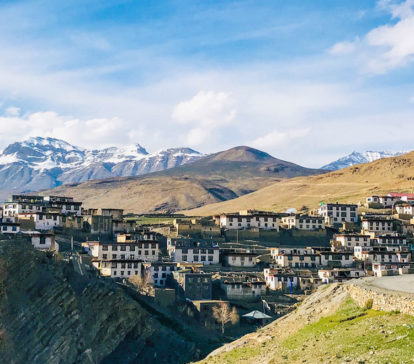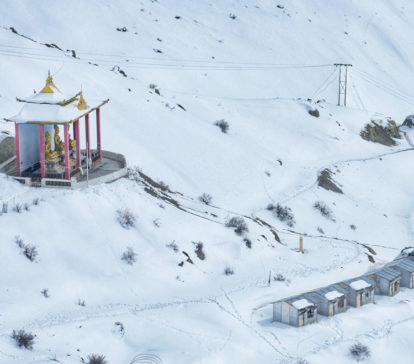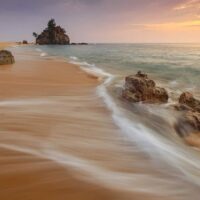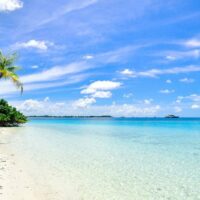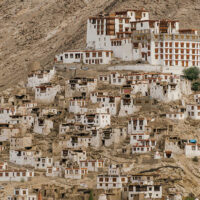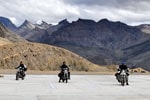Book Your Spiti Valley Tour With Picture Holidays
Lahaul & Spiti can leave you breathless with its spectacular views, but with its unique heritage it can also make you feel breathless. Spiti valley is open to the outside world only during the summer when the weather is fair. It remains isolated for the rest of the year, as the roads to this area are affected due to dense snow layers.
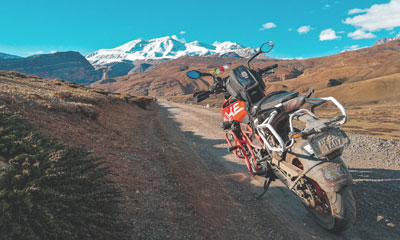
Bike Tour to Spiti Valley
Riding your revered bike, traveling under bluish skies and marching to the desert stone valley of Spiti on a snow-filled mountain side highway are unforgettable experiences. The bike trip pass through a high altitude Himalayan resort town in the northern state of Himachal Pradesh in India.
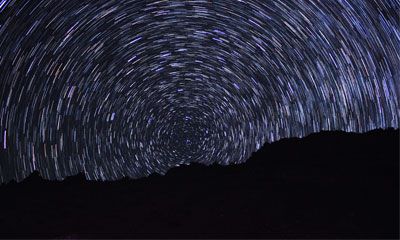
Camping at Chandratal Lake
Chandra Tal is known as the “Lake of the Moon” and is simply amazing. The lake is open from the end of May through early October. A stunning, pristine and sacred lake in Spiti Valley, at an altitude of 14600 feet. The lake’s water is crystal clear and if you’re lucky enough to have a sunny sky, you can get the valley’s snow clad mountain range reflection on the lake.
Where is Spiti Valley located?
Spiti Valley is in Himachal Pradesh.
When is the best time to visit Spiti Valley?
Best time to visit Spiti Valley is during summers from March to July.
What is Spiti Valley famous for?
Spiti Valley is famous for its scenic road trips and heritage monasteries.
How many days are enough for Spiti Valley?
Ideally it takes 10-12 days to cover Spiti Valley.
Where to stay in Spiti Valley?
You can stay in Narkanda, Sangla, Chitkul, Kalpa, Nako, Kaza, Losar, Chandratal Lake
You May Also Like Leh Ladakh Tours
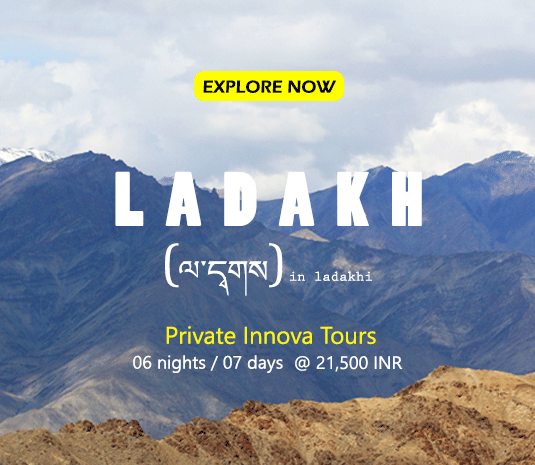
Travel Blogs On Spiti Valley
-
Things To Do In Havelock Island
Searching for the best beaches in Andaman? Look no further ! With its colourful fishes, lushy mangroves, immensely rich
July 11, 2020 -
Best Beaches In Havelock Island
Havelock Island is popular for those who want to indulge in scuba diving, snorkelling, and deep sea diving. Havelock Isl
July 7, 2022 -
Travel Tips For Ladakh
How Is The Climate In Ladakh? The main problem is the illness is caused by the high altitude; since Ladakh is situated a
July 7, 2022
Famous Places In Spiti Valley Tour
Kibber Near Kaza
Chandratal Lake
Explore Other Scenic Destinations
Frequently Asked Questions On Spiti Valley Tours?
Where is Spiti Valley?
Spiti Valley is a high altitude Indian valley situated in the Himalayas of Indian state Himachal Pradesh. Spiti Valley is in the middle of Shimla and Manali.
How to reach Spiti Valley?
To reach Spiti Valley from Shimla one can go via Kinnaur Valley route, which goes through Shimla – Narkanda – Rampur – Powari – Spillow – Khab Bridge – Nako – Chango – Sumdo – Tabo – Kaza. After Sumdo, it is Spiti Valley.
The other route is via Manali, which goes through Manali – Rohtang Pass – Gramphu – Chhatru – Chota Dhara – Batal – Kunzum La – Losar – Kaza.
How to reach Spiti Valley?
The road to Spiti via Shimla remains open almost throughout the year (except when there have been landslides).
The road to Spiti via Manali remains open only 4-5 months in a year, usually from mid-June to mid-October.
Manali to Kaza road is regarded as one of the world’s toughest and adventurous roads.
When is the road from Manali to Spiti open?
The road to Spiti via Manali remains open only 4-5 months in a year, usually from mid-June to mid-October.
Manali to Kaza road is regarded as one of the world’s toughest and adventurous roads.
How to I avoid Acute Mountain Sickness (AMS) or altitude sickness?
The best way you can lower your chance of getting Acute Mountain Sickness (AMS) or altitude sickness is through acclimatization and by keeping yourself hydrated by having plenty of water.
For detailed information about AMS please refer to this article on a healthcare website WebMD
Are there any permits required for Spiti Valley trip?
Spiti valley shares an international border with Tibet , however unlike Ladakh or Sikkim, you don’t any special permits.
On entering Spiti, you will have to make an entry (at Sumdo village if coming from Shimla route OR at Losar, if coming from Manali route).
Please note only vehicle permit is required if entering from Manali – Rohtang Pass route.
Do foreign nationals require any permit to enter Spiti Valley?
If you are a foreign national, then you will need a Protected Area Permit (PAP) to enter Spiti, which can be arranged in advance at the Shimla District Collectors office or at the border post of Reckong Peo.
If you are entering from Manali route, then the border police will register your passport number at the entrance to the valley and it will rarely take longer than 5 minutes, additionally a vehicle permit is also required.
How is the mobile phone network in Kinnaur and Spiti Valley?
There is mobile phone coverage in Kinnaur but not in Spiti Valley. BSNL, Airtel and Vodafone postpaid connection work in Kinnaur Valley upto Poh.
Only BSNL postpaid connection works in Spiti Valley. Overall BSNL network has the widest coverage in Spiti Valley and Kinnaur Valley including border village of Chitkul.
Are there ATMS machines in Spiti Valley?
There are very few ATMs you will find in Spiti, but its functioning is not guaranteed due to power outage or network connectivity problem.
Tour Information About Spiti Valley
Spiti translates to “Middle Land”, as in ancient days it was used to travel between India and Tibet. Spiti is pure pristine with beautiful villages, white mountains, having a peaceful lake, and is also the world’s toughest roadway. [showhide type=”links” more_text=”Read More” less_text=”Hide Read More”] Due to heavy snowfall Spiti Valley gets disconnected from the rest of the world for nearly 6 months.
The treacherous roads will lead you to Kinnaur Valley in Spiti through beautiful towns and hill stations of Shimla, Sangla, Nako, Kaza, Chandratal Lake and Manali.
Spiti is not your regular hill station. Spiti is surrounded by high mountain ranges with extreme temperatures so always start the tour gradually and get acclimatized first.
If you are looking for more information about Spiti Valley you can also check out the official government website for Lahaul And Spiti District
Sightseeing Places in Spiti Valley Tour
Kaza – The capital of Spiti Valley
Kaza also called Kaze, is the capital of Spiti Valley in the Lahaul and Spiti district of Himachal Pradesh. Spiti river is just few minutes walk from anywhere in Kaza. People usually enter here first before heading to other places since it is the main market place and has a central position in the Spiti Valley.

Kaza sits at an elevation of 11,980 ft above sea level along the Spiti River. Mostly all the treks for Spiti Valley start from Kaza. It is a dream destination, surrounded by magnificent mountains covered with snow, curving and fizzing rivers and streams and picturesque desert farmland with sparse green patches.
Kaza can be reached from either Kinnaur Valley or Lahaul Valley. The road via Kinnaur is open throughout the year, with the exception of occasional landslides or heavy snowfalls. Road from Manali to Kaza which passes through Rohtang Pass is open only for few months, usually from June to September.
You can cover 5 nearby villages once you are in Kaza. You can do day trips to Hikkim Village, Kibber Village, Komik Village, Langza Village, Key Village.
The Kaza Monastery is a sight to behold, and even better when you witness all the monks offering their prayers in the morning. You can join the monks for a delicious morning tea. You will fall in love with this memorable experience.
The weather can be very cold here. January is the coldest month of the year at an average temperature of -10° celsius while July is the hottest month at an average temperature of 15° celsius.
Kaza is renowned for its rich heritage, and shares a similar climate, cuisine, environment and Buddhist traditions to neighboring Tibet and Ladakh regions. They celebrate festivals such as Faguli, Gochi, and other harvesting celebrations.
From the local market in Kaza you can buy pure woolen clothes, carpets and ready made garments made of merino wools, chinese ceramic utensils, gems and local jewellery. There are plenty of accommodation options and eatery spots available in Kaza and it has the valley’s largest shopping centre.
Kye / Ki / Kee or Key Monastery (Gompa) of Spiti
Key Monastery is a must visit place and is usually covered in all Spiti Valley Tour Packages.
The Key Gompa is nearly as old as the Tabo Monastery (11th century). It is situated in Key Village and is right between Kaza and Kibber Villages. Kaza is around 10 kms from Key Monastery, which can easily be covered from Kaza.
The monastery contains numerous Buddhist relics and manuscripts. The breathtaking view of the Spiti Valley you get from the monastery along with the monks lifestyle adds to a great experience.
After Chandratal Lake, Kaza is one of the most famous places in Spiti valley. The Kee / Kye monastery is India’s largest base for teaching Tibetan Buddhism.
The Key Monastery has a 3 kilometre uphill climb from the village. The Kye Monastery is a picturesque rocky mountain that rises from a steep slope over the Spiti valley, standing at 3890 metres.
At the top of the mountain is a temple built for the Buddhist monks stay. You can get to meet the monks there. Have a chai with them, observe their life, have a chat with them by hiring a local guide. Around 250-300 monks live permanently at the monastery.
Tabo Monastery in Spiti Valley Tour
Tabo village has a flat bowl like setup. The village serves as a pit stop for tourists travelling to or from Kaza, owing to the rise in tourism over the past two decades. It is renowned for its Tabo monastery which is 1000 years old, and for some heritage ancient caves.
Tabo Monastery is the oldest continuously operating Buddhist settlement in India, being an important part of the Buddhist tradition through centuries.
You’ll be delighted to see the beautiful wall paintings, thanka collections, vast murals and frescoes from life stories of Buddha and stucco sculptures of Bodhisattvas. This ancient monastery includes 9 temples, several decorated stupas, cave shrines. It was built more than thousand years ago, interestingly even today you can still find them.
Tabo is a must visit location during your Spiti Valley Tour Packages. Picture Holidays highly recommend this.
Dhankar Village in Spiti Valley Tour Packages
Dhankar is another tiny village with a population of just 300 people (as per 2011 data). It is located between Tabo and Kaza, this lovely village lies on top of a hill surrounded by barren mountains and enjoys a panoramic view of the meeting point of the two major rivers of the Spiti Valley – the Spiti River and the Pin River. It was the former capital of Spiti Valley and was used to stay here by the royal family.
Dhang means cliff, and kar means fort. Hence, Dhankar means fort on a cliff. It was the place of the early ruler of Spiti, the Nonos. Built like a castle on the high walls of Dhankar, this monastery offers you a magnificent view of the Spiti valley.
Dhankars used to be a fort above the village but can now be reached by a short walk to see the ruins. The terrain of this village is very poor due to wind and rain erosions, and the Dhankar Fort is on a degrading stage due to soil erosions.
The Monastery of Dhankar Gompa was once a part of the fort. In 2006, Dhankar Monastery was identified by the World Monuments Fund as one of the ‘100 most endangered sites in the world’ and had begun undertaking its preservation.
If you are someone who loves being in a quiet village with a picturesque location, Dhankar is a must visit village in Spiti for you. Limited homestays are available for your lodging in Dhankar village where you can connect with locals to learn about their culture and lifestyle.
Chandratal Lake in Spiti Valley
Chandra Tal Lake which simply means moon shaped lake (“Chandra” means moon & “tal” means lake in Hindi). The turquoise waters of Chandra Tal Lake maintains a range of about 3 KMs and is one of the source of the powerful Chandra River. The evening Sun creates beautiful hues in the sky, and almost every 5 minutes changes the color composition.
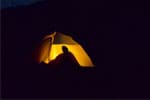
Chandratal Lake is situated about 2 kilometers from the parking lot and it takes a lot of time to reach there as the oxygen level is minimal. You need to walk on an easy trail from the end of the road. It takes an hour to reach the top.
Chandratal Lake is a campers paradise. However since few years there is no proper place to stay close to Chandratal Lake since the government has banned camping near the site.
If you plan to camp then you can still find campsite at 2 kms from the lake which is actually good to prevent environmental hazards. You will have to camp under tent for your stay near Chandratal lake. Do not forget to get winter clothes as the temperature drops below zero at night.
The lake is a protected area and the meadows that surround the lakes are magical with wild flowers of many varieties. One can see smaller lakes near the main lake. These lakes deliver spectacular sceneries in the background with the gigantic Mulkila Mountain and the Chandra River.
The lake is closed to visitors for nearly 7 months in a year, but is still one of India’s most sought after camping experience.
Homestay in Spiti Valley Tour
The best way to learn and understand the local customs is to interact with the local people and share a bit of their lives. You will enjoy delicious home cooked meals in their homes, and feel like a true member of the family.
Spiti Valley Bike Trip
Spiti is also a paradise for bike riders. Take a bike trip to India’s one of the most unexplored and offbeat destinations. We are also popular for Spiti Valley Tour Packages with Bike Trips.
Presence of Buddhism in Spiti Valley
Buddhism and Hinduism are two major religions most people follow in this region. The people practice a combination of Hinduism and Buddhism, with a community profoundly influenced by Tibetan Buddhism.
A Spiti Valley Tour could provide the best chance to learn about Tibetan Buddhism. Have your mind ready to grasp all the principles of Buddhism, religion and spirituality. You will learn and develop yourself at a place where for more than a century, Buddhism has been a vibrant community.
There are a number of important Buddhist monasteries in Kye, Kaza, Dhankar, and Tabo. Lahauli people from Tibetan Buddhism mainly follow the order of Drukpa Kagyu. There are then several temples that have a combination of Hindu and Buddhist idols and customs. One of the more famous is Trilokinath Temple.
The Tabo Monastery in Spiti, also a renowned World Heritage Site, is amongst these the most famous monastery. The numerous monasteries of Lahaul and Spiti promise to leave behind a fascinating impression of the life and culture of these Himalayan highlands in your memories with their beautiful Bodhisattvas statues, enchanting meditation caves and exquisitely made wood carvings.
People and Culture in Spiti Valley
For an outsider, Lahaul and Spiti’s language, people, and culture may seem similar, but even among neighboring villages, they can vary a lot. Because of its proximity to Tibet, people in Spiti share a lot of Tibetan traits, language and customs while people in Lahauli have a mix of Indo-Aryan and Tibetan.
Lifestyle in Spiti Valley
Because of similar terrain and weather conditions, the simple lifestyle at Lahaul and Spiti Valley is largely similar. For their livelihood, most people rely on agriculture and animal husbandry (goats, yaks, sheep).
Tourism, crafts and government employment are also growing in popularity. Houses are built in more or less the same Tibetan style with flat roofs apart from some subtle variations. Fuel is stored on the roofs, in the form of coal, straw and dung.
You can get to interact with the local people during your Spiti Valley Tour.
Important things to remember when going to Spiti
- There is only 1 ATM in Kaza and is often not operational. We suggest visitors to carry sufficient money with them. Spiti is absolutely safe and you will never feel unsafe to carry money with you. Although there are less ATMs, you can still find options to pay by cards in many places.
- Only BSNL sim cards work in Spiti. Airtel, Vodafone or Jio do not provide services in Spiti.
- Kaza is at an altitude of 3750m and it takes time to acclimatize your body. Your body loses 4 times the water here compared to sea level. To minimize the risks of altitude sickness keep yourself hydrated by drinking lots of water and rest for the first 2 days.
- Spiti is a remote destination where the infrastructure is poor. However, you will be in love with Spiti as long as you come with limited expectations for mobile networks, internet, power frequency.
[/showhide]
Other Destinations In India
Top International Destinations
Bangkok Pattaya Tours | Singapore Tours | Cambodia Tours | Vietnam Tours | Hong Kong Tours | Dubai Tours | Indonesia Tours | Maldives Couple Packages | Seychelles Couple Packages | Bhutan Family Tours



